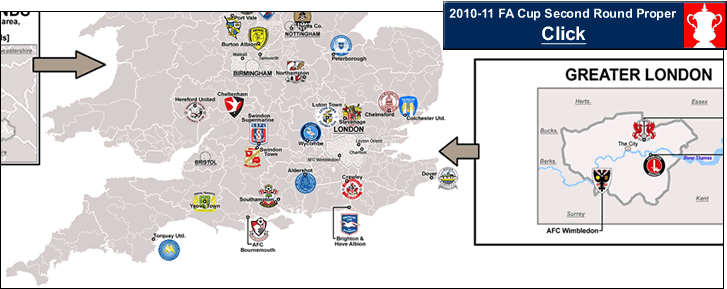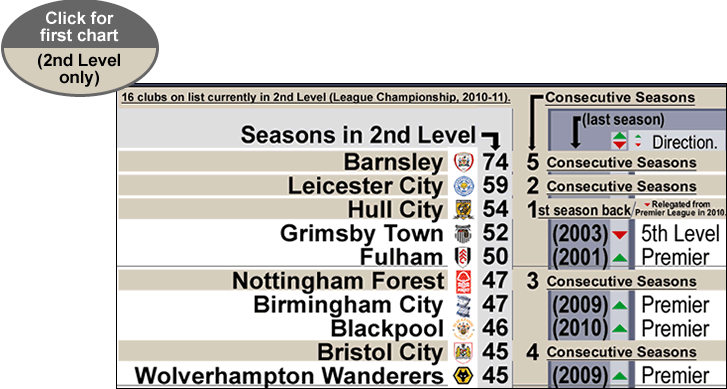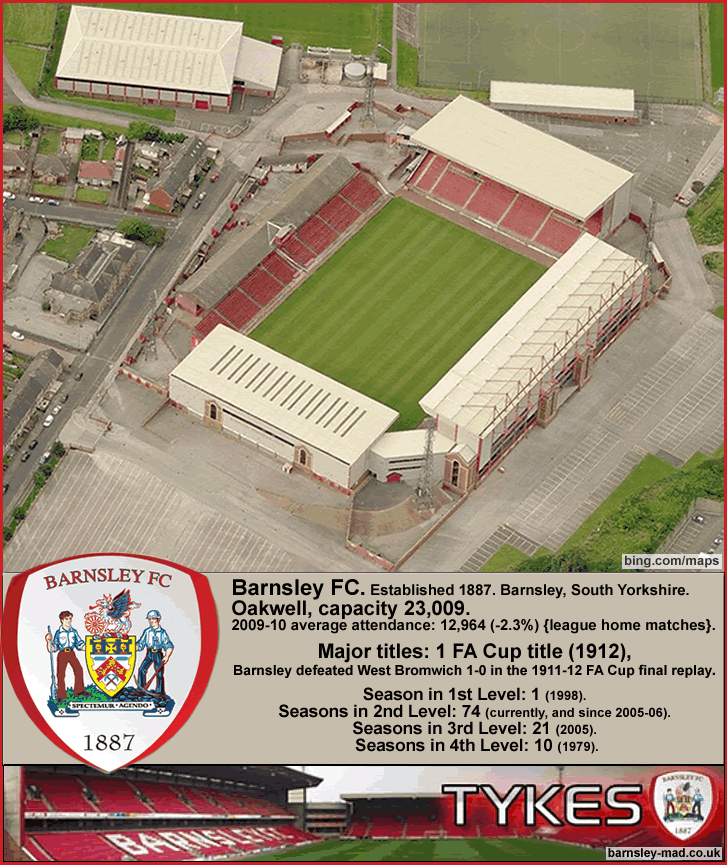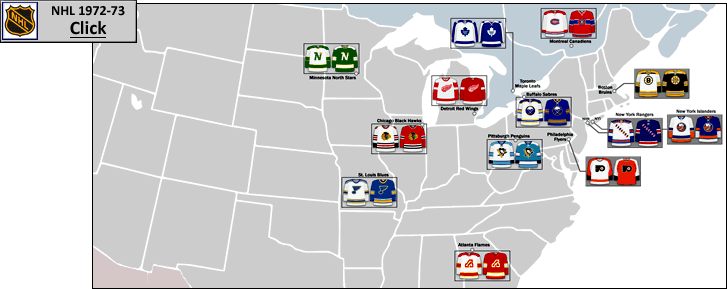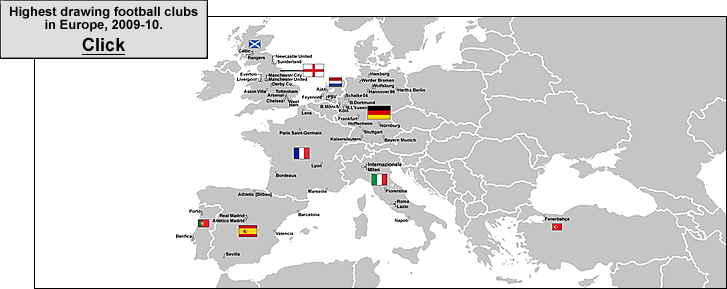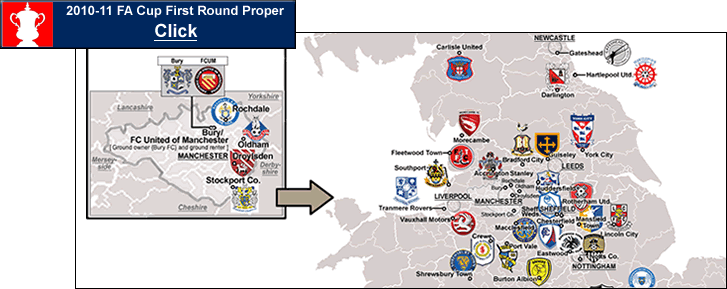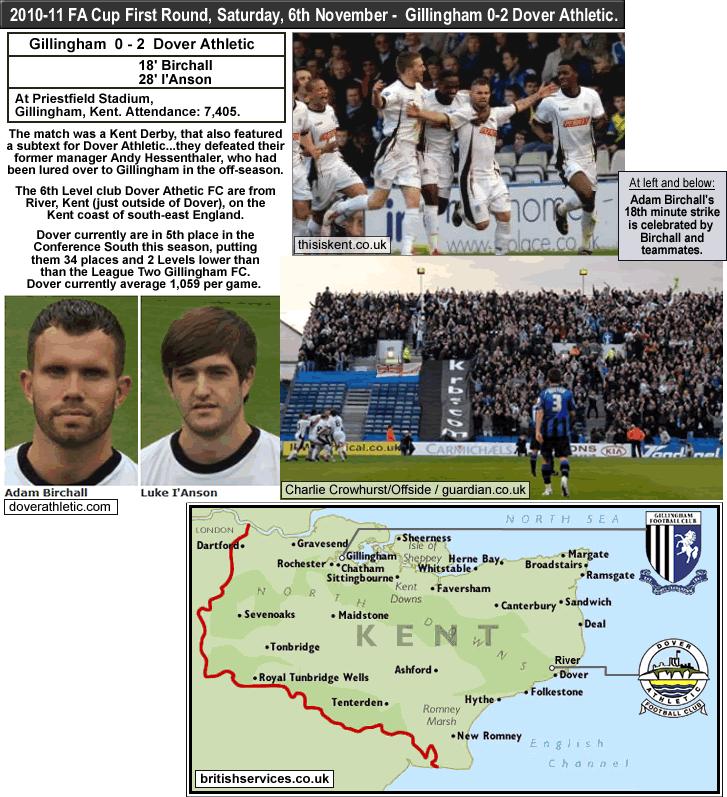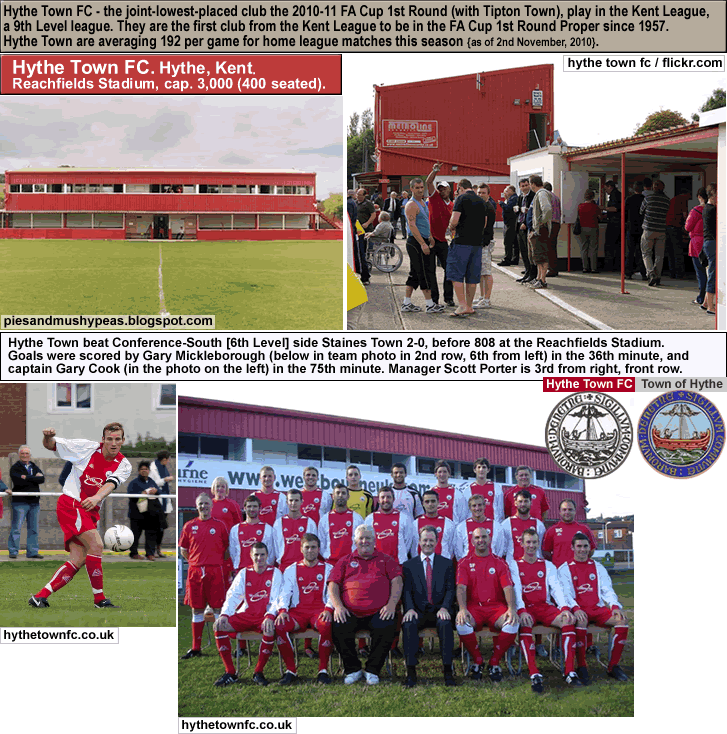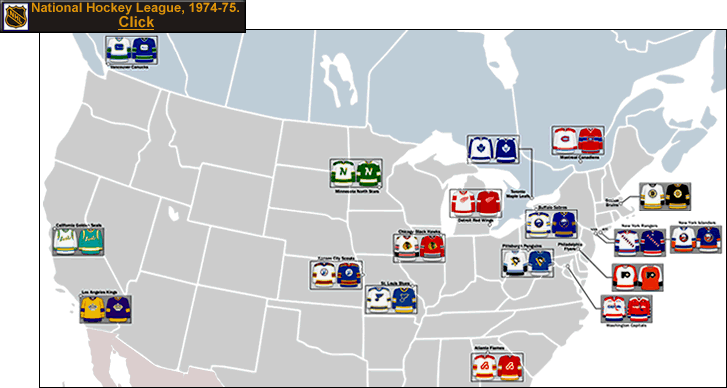
NHL 1974-75 season
…
…
The 1974-75 NHL season…
The league expanded the schedule slightly, from 78 games to the 80 game regular season that it still maintains to 2010-11. The two-division format was replaced by a 2-conference/4-division format that on the surface had no geographic orientation. But there actually was a couple of geographic clusters within the 4 divisions, with the teams from the Eastern seaboard cities in one division (NY Rangers, NY Islanders, Philadelphia Flyers, Atlanta Flames), and the Midwest teams (Chicago Black Hawks, St. Louis Blues, Minnesota North Stars, Kansas City Scouts), plus the Vacouver Canucks, in another division.
The revised playoff format was sort of ahead of its time in one respect, and credit must be given to the NHL front office for this innovation…In each round of the playoffs, teams were seeded according to regular-season records, so best played worst/second-best played second-worst, etc. This gave more weight to the regular season and continued to reward the teams with the better regular season records.
1974-75 playoff brackets, here.
In the Stanley Cup finals, the Philadelphia Flyers, coached by Fred Shero, led by gap-toothed scoring wizard Bobby Clarke, and muscled by a cast of goons who earned the name “The Broad Street Bullies“, beat the Buffalo Sabres, led by the “French Connection” scoring line of Rick Martin/Gil Perrault/Rene Robert, 4 games to 2. The Flyers, who would repeat as champions the following season (but have never won the Cup since) were the first modern-day expansion team to hoist Lord Stanley’s cup.
1974-75 NHL Expansion…
At this point in the history of the league, the NHL was in a war of escalation with the World Hockey Association, and that meant continued expansion in defiance of logic, and in defiance of the depleted talent pool.
So 1974-75 saw the NHL’s fourth expansion in 7 seasons, with the addition of the 11th and 12th expansion teams in that 7 year period…that made it 18 NHL teams, when there were just 6 teams 8 years previous. And because the WHA had 14 teams at this point, there were now 32 major league hockey teams in North America, where 8 years before there were just 6 teams. The quality of play obviously suffered, and this season saw the worst-ever record by a major professional hockey team, with the expansion Washington Capitals winning just 8 out of 80 games (with 5 ties), for 21 points. The other expansion team, the short-lived Kansas City Scouts, had a better showing on the ice, with 15 wins and 11 ties for 41 points, but this ill-conceived franchise had a much bigger problem. Very few people in western Missouri/eastern Kansas bothered to attend Scouts’ games. It’s pretty obvious that the NHL front office did very little in the way of, well, scouting out suitable expansion locations, because this part of the USA has never been even remotely close to being a hotbed for ice hockey. To show you how little interest there is in hockey in Kansas City, currently there is no minor league hockey team there (the last being the Kansas City Blades of the now-defunct IHL, who drew 5,235 per game in their last season in 2001-02), although there is a Central Hockey League team in Independence, Missouri, which is 18 km./11 miles south of Kansas City.
The Kansas City Scouts’ two seasons saw an average of 4,109 per game (the league average in the NHL in 1974-75 was 13,224 per game {see this, from Hockey Zone Plus.com}. The under-capitalized owners were forced to sell to a consortium in Denver, Colorado, and in 1976-77, the Scouts became the Colorado Rockies. That incarnation of the franchise would have similar problems, and the franchise only became viable when it moved east, in 1982, and became the New Jersey Devils.
The Washington Capitals had better financing, and, being situated on the southern edge of the chain of Northeast metro areas, were far better positioned to build a good fan base. The Capitals to this day have never won a Stanley Cup title (with one Stanley Cup finals appearance, in 1998), but are a strong NHL franchise that consistently sells out their arena (the Caps were one of the eleven NHL teams that played to 100% capacity last season), and have evolved into an exciting team that features one of the league’s superstars in the Russian left winger Alexander Ovechkin. Their biggest problem is that they are stuck in the NHL’s bogus Southeast Division, which, aside from the Washington Capitals (and arguably, the Carolina Hurricanes), is full of teams that never should have been created…the Florida Panthers, the Tampa Bay Lightning, and the Atlanta Thrashers. In the NHL, the Board of Governors has never learned the lessons of over-expanding.
It’s time for Canada to re-claim it’s rightful share of NHL teams
The fact is nothing has really changed in the NHL, and the top brass continues their pipe dream of establishing the NHL in places where there is no tradition of playing hockey or supporting an ice hockey team. So tens of thousands of potential season ticket holders in Canada go ignored, and the NHL is full of lame teams in the South or the Southwest that no one cares about, where attendances are even worse than the official attendance figures because the NHL pads the gate figures with thousands of free tickets per game. There are at least four teams that should never have been created – the Phoenix Coyotes, the Florida Panthers, the Tampa Bay Lightning, and the Atlanta Thrashers. Now add the Columbus Blue Jackets to the list of failing new franchises. Columbus is a pretty small market to sustain a major league team (1.7 million, 32nd largest city in the USA), so it could be said that it was inevitable that, come an economic downturn, a team like this would suffer. Columbus, Ohio is part of a region in south-central Ohio that is pretty devoid of any ice hockey history. And, you know, it is not that uncommon to hear citizens of Columbus, Ohio that speak with a southern accent…it’s a city that is more a part of the region of the greater Ohio River Valley than the region of the Great Lakes-rim cities of the Rust Belt. Columbus only averages 29 inches of snow a year, and the average high and low temperatures in the coldest month, January, are only a high average of 36 degrees F/2.4 Celsius, and a low average of 20 degrees F/-6.5 Celsius, so you can see there could never really have been a tradition of kids playing ice hockey outdoors in Columbus…ponds and flooded park parking lots would keep melting even in the coldest part of the year, unlike in Detroit, Buffalo, southern Ontario, etc. {see this}. Also, consider that Columbus, Ohio’s most famous product is the Ohio State Buckeyes college football team, and Ohio State University boasts the largest campus in America. When you look at the the demographics and the schedules, it is college football (and to a lesser extent, college basketball) that is going to be the biggest impediment to the NHL extending their product into new markets with any success, especially since the NHL likes to choose as expansion locations mid-sized cities where no NBA team is (like San Jose, Columbus, Nashville, Tampa/St. Petersburg, Greensboro, St. Louis, Pittsburgh, and the 3 western Canadian teams). And college football is king in the South and the Southwest. College basketball is also pretty big in the Ohio Valley, and in case you’re wondering, Ohio State’s ice hockey team can also be seen to be eating into the Columbus Blue Jacket’s fan base (the Buckeyes ice hockey team averaged 3,096 per game in 2010…the 21st highest drawing program in NCAA hockey [Wisconsin was *1 again, see this pdf} . With very few exceptions, specifically the Dallas Stars, the Carolina Hurricanes, and the Nashville Predators, there will never be significant interest in major league ice hockey in the South and the Southwest.
Here's a concrete example of how little presence ice hockey has in the Southwest... from Arena Maps.com, the following link shows ice hockey arenas in the province of Manitoba, Canada, here [over 230 ice rinks in Manitoba].
This link shows ice hockey arenas in the far-more populated state of Arizona, here [20 ice rinks in Arizona}.
Where are the hard-core fans going to come from in Arizona when there is only 20 ice rinks in the whole state? Sure you are going to attract some casual fans, interested in the novelty of ice hockey in the desert, but they will by and large vanish when the economy falters and choices must be made about where someone's disposable income goes...and this is what's happening. NHL hockey games are not cheap, and good tickets are way above $100. If the team you are spending all that money on is doing bad, that 100 bucks or so you are dropping each time out gets old pretty fast. But Phoenix has a good team, so it's even worse than most examples of poor attendances in the recent past, by other NHL teams that are currently doing well. Because when teams like Pittsburgh, Buffalo, Vancouver, and Chicago were in trouble, those teams were also doing bad on the ice, and in some cases the arenas were inadequate (Vancouver especially), and in some cases the ownership was poor and alienated the fans (like in Chicago). But in those cases, bad teams precipitated poor attendances. Not so with Phoenix - the Coyotes had the 5th best record in the NHL last season, but still had the worst attendance at 11,989 {here are official 2009-10 NHL average attendance figures (as measured by tickets distributed by NHL teams), here}.
Teams like Phoenix and Atlanta and Columbus and the Islanders are getting 7,000-attendances for some games this season, and Phoenix is averaging 10,265 per game as of Nov. 18, 2010 - and remember, that's for tickets distributed, not tickets sold. Yes, the NHL's official statistics for attendances do not measure tickets sold. The figures don't even measure turnstile clicks, but rather tickets distributed. So in places like Phoenix, they are literally giving away tickets and still people won't attend. For many teams the attendance figures are hollow figures. It's the NHL's dirty little secret. And it's not like a couple hundred tickets per game, the give-away tickets very often number in the thousands per game...the poor-drawing teams are giving away, free, up to, and some times even more than 3,000 tickets per game. Often, this fact is not even brought up when poor hockey attendances are discussed, and it is all but impossible to find figures, in black and white, as to what extent free tickets are distributed in the NHL. But they were part of prospective (and continually rebuffed) would-be NHL owner Jim Balsillie's court filing in 2009... {see this post from June, 2009, from the From The Rink.com site - sorry for the tiny print in the figures, but hit the Shift and + keys a couple times to enlarge}. To save you the trouble of eye-strain, the photo of the list submitted to the court shows that the announced gates at Phoenix home games in 2008-09 averaged 3,923 higher than the turnstile count. So the low gate figures are even lower. In 2008-09, Phoenix was actually seeing 10,943 ticket holders pass through the turnstiles per game, not the "official" atendance average of 14,866. So now, 10,200 per game in Phoenix, is more like 7,000 paying customers (if that). By the way, I can't confirm this, but I have seen it posted on some hockey fan message boards that the lowest number of free tickets distributed are in Canada and specifically the western Canadian teams, especially Vancouver, and Calgary.
Go to hockey message boards {HF Boards.com/thread -Attendance Issues, part II, ~Nov. 7, 2010, here}, with discussions about falling attendances in places like Atlanta and Phoenix and you will get Atlanta Thrashers fans who insist it's because of lame ownership and "poor marketing". The fact is, hockey does not need to be "marketed" in Canada. People care about the sport and are willing to drop way more than $75 dollars a pop, several times a season, to support local NHL product. Contrast this with the South, the Southwest, and many places in the Midwest, even, where NHL hockey highlights, if shown at all, will be shown after local high school football highlights. And saying that there is great potential for major league hockey in the Greater Atlanta metro area because the nearby Gwinnett Gladiators draw over 7,000 per game in the ECHL (Gwinnett's peak crowds were actually at 5,656 per game in 2007-08,{see this}) does not prove that Atlanta can be a successful major league hockey town, because those tickets are far, far cheaper than NHL tickets. We're talking like 20 bucks for an ECHL game versus at least 50 and more like 75 bucks for an NHL game {$78 for OK seats in Atlanta, see this}. A family of four can have a night out at a minor league hockey game for around $100, versus more like $300 to $400 at an NHL game.
From NHL.FanHouse.com, November 9, 2010, by Alan Adams, 'Attendance Woes Just Won't Go Away for Sun Belt Teams'. The situation will not change until Gary Bettman is gone from the commissioner's seat. He is trying to gloss over the abject failure of NHL expansion into the Sunbelt, by propping up the Phoenix Coyotes, and preventing any talk of relocation of them, or of the other tepidly supported teams in Georgia and Florida. He thinks he is protecting his legacy, but he will only harm it more by basically betraying hockey fans. Why is it that these new teams are so crucial, but he did little if anything to save the Winnipeg Jets, the Quebec Nordiques, and the Hartford Whalers, all who moved to warm weather locales in the 1990s ? Because 2 of those 3 teams were based in mid-sized Canadian cities, and all 3 were teams in cold weather locations, and the NHL is primarily interested in expansion into warm weather areas...where very few people ever cared or ever will care about ice hockey. The NHL thinks it can create a coast to coast and north to south, continent-spanning league, that will generate vast sums in television contracts. In truth, ice hockey will always be a regional sport...but there is absolutely no shame in that. The NHL Board of Governors has been chasing this "major sport" illusion for over 40 years now, and have turned their backs on true hockey fans, and potential season ticket holders, in Canadian cities like Saskatoon, Saskatchewan; Winnipeg, Manitoba; Hamilton, Ontario; and Quebec City, Quebec.
"Can you imagine another industry which is of huge importance to Canadians, where Canadian consumers are being denied access to a product that they vigorously demand, all because of an anti-competitive agreement between 30 wealthy owners, 24 of whom are American?" -U.S. sports law professor Stephen Ross, of Penn State University, in this article by Dave Feschuk in the Star.com, from Sept. 12, 2009, here.
Canada is where ice hockey became a viable professional sport. Canada is where sizable bases of serious hockey fans are. What kind of patriots are these Canadian-born NHL owners and Canadian-born NHL Board of Governors? They have forsaken their fellow Canadians, and specifically Canadians who live in mid-sized cities who would jump at the chance to actively support new NHL teams. They have continued to reject James Balsillie's repeated attempts to relocate one of the failing US-based NHL teams to Hamilton, Ontario {see the following, 'NHL's ugly bid to beat Balsillie in Coyotes fray, more notes', by Jim Kelley at SportsIllustrated.CNN.com, August 27, 2009}. Why? The NHL can spin it any way they want, but it is because Hamilton is 57 km./35 miles away from Toronto...too close, they maintain, to the Toronto Maple Leafs and a threat to the Maple Leafs' fan base and franchise. Please. There are teams all over the world that are from cities or regions with similar or even smaller populations than Toronto (which has around 5.1 million people in the metro area, see this), who compete in the same leagues with other local rival teams, and they all are able to successfully draw fans...in association football [aka soccer]… cities from Glasgow in Scotland (approximately 1.16 million in the Greater Glasgow area), to Manchester (around 2.24 million in the Greater Manchester area) and Liverpool (around 1.37 million in the Liverpool urban area) in England, to Amsterdam/Rotterdam in the Netherlands (which are 55 km./34 miles apart and have combined metro populations of 1.5 million + 1.1 million= 2.6 million). ['List of largest United Kingdom settlements by population', from en.wikipedia.org; Netherland largest cities, from mongabay.com, here].
The football clubs in these cities…Celtic and Rangers in Glasgow; Manchester United and Manchester City in Manchester; Liverpool and Everton in Merseyside; and Ajax and Feyenoord in Holland… are all able to maintain high average attendances (all over 35,000 per game and in some cases, like Man U., of over 70,000 per game) over a slate of 20 to 30 home matches each season, even though another high drawing competitor also plays in their area. When you crunch the numbers, these football clubs are pulling in, in total accumulated attendance from home league matches, as much as or more than the highest drawing NHL teams. Example…Liverpool FC plays 19 Premier League home matches a season. They drew 42,864 per game in 2009-10. Everton FC, who play 3 miles away, drew 36,725 per game. 42,864 X 19 = 814,416 total accumulated attendance for Liverpool.; 36,725 x 19 = 697,775 total accumulated attendance for Everton.
That’s two teams in a city/metropolitan region less than half the size of Toronto, with an average total accumulated attendance in 2009-10 of 756,095. Toronto Maple Leafs played to 102.5% capacity in 2009-10, and averaged 19,260 per game, with an accumulated total attendance of 789,681 over 40 home games total {NHL 2009-10 attendances, from ESPN. here}.
So that’s almost exactly equal accumulated attendances, and remember, Liverpool is less than half the size of Toronto, and probably has even a smaller fraction of the total disposable income that Toronto citizens have. And still Liverpool is able to support 2 big teams. And I haven’t even factored in the populations of Hamilton (or Kitchener, for that matter), so there really is more like 6.1 million, not just the 5.1 million, in Toronto’s wider regional area (ie, the area which people could attend a hockey game by driving approximately one hour or less). And I haven’t even included other home matches Liverpool and Everton played in Cup competitions, so those accumulated attendance figures will surpass the Maple Leaf accumulated attendance figures…even if Toronto made the playoffs once in a while, thus adding more home dates. But that’s another problem when one team gets complacent because they play in a large sports market with no local rivals…they start to stagnate. And Toronto has not won a Stanley Cup title since the modern expansion era began in 1967-68. Coincidence ? Want another example of how a local rival breeds a more competitive atmosphere ? The New York Rangers, after winning 3 Stanley Cup titles in their first 14 seasons, did not win a Stanley Cup title during the 30 years they were the sole team in the New York/New Jersey metro area (1942 to 1972) [the Rangers, of course finally won another Stanley Cup title in 1994].
The Toronto Maple Leafs’ majority owner is the Ontario Teachers’ Pension Fund {see this}. The last thing a huge pension fund wants to do is invest with no guaranteed return, and that’s exactly what attempting to build a championship contender would entail. So the Maple Leafs are virtually institutionally guaranteed to not be successful on the ice. They play to a plus-100% capacity. They have got a sweet deal, without even having to bother to be competitive, and the Leafs suck most years. The Maple Leafs haven’t made the playoffs since 2003-04. Why would a pension fund want to invest in building a championship caliber team when there is no need (there is no relegation system like in European football), when they have basically got a license to print money – because that’s what owning the sole hockey franchise in the largest city in Canada, with no competition in the market, will get you – guaranteed sell outs, and you don’t even have to bother fielding a competitive squad.
The New York Rangers were coerced into allowing the New York Islanders into the league in 1972-73, and then a decade later those two teams were coerced into allowing a third team into the New York/New Jersey metro area, when the New Jersey Devils set up shop in 1982-83. Granted, New York City is larger than Toronto, but the Toronto-and-southern Ontario region could easily support another NHL team. After all, in 1974-75, the WHA’s Toronto Toros were drawing 10,436 per game when they rented out the Maple Leaf Gardens from the Maple Leafs, and the Toros got most of the bad nights…that is to say, very few high-attendance generating game dates like on the weekends [The NHL average in 1974-75 was 13,224 per game {1960-61 to 1998-99 NHL attendances, here}]. That Toros’ attendance avrerage of 10,436 might seem on the low side today, but it wasn’t a low figure 36 years ago for a rebel league… only one other WHA team besides the Toronto Toros ever had a higher-than-10,000 per game average attendance, and that was the Edmonton Oilers, who did it in 3 of the 7 WHA seasons. [WHA attendance figures at the left of the WHA map page, here.]
-
Thanks to Jersey Database.com site, for the 1974-75 jerseys, jerseydatabase.com/browse – hockey [click on team names, for each team's jersey fronts, which are shown on a new page, horizontally and in chronological order].
Thanks to the contributors to the pages at en.wikipedia.org, 1974-75 NHL season. 2010-11 NHL season.
